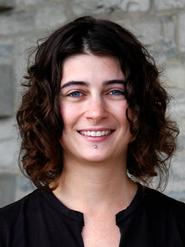
Visiting Instructor of Comparative Literature Janelle Schwartz organized a
panel and gave a paper at the American Comparative Literature Association's 2006 meeting, "The Human and Its Others," held March 24-26 at Princeton.
Schwartz's panel, "A Cabinet of Curiosities: Objectifying the Human from the Renaissance to the 21st Century," was co-organized with Nhora Serrano from the University of Wisconsin-Madison. It was a three-day panel with four papers given each day. Schwartz's paper was titled "Putting Polyps Into Powder Jars: Applications and Implications of the Spontaneous Generation Debate."
The abstract for the panel was as follows: A phenomenon in the Renaissance that proliferated Europe throughout the 16th and 17th centuries, the cabinet of curiosities was in essence a personal collection of rare, unknown and marvelous objects. Popular, visual and encyclopedic in their approach, these cabinets, or Wunderkammern, included a diversity of specimens from both known and newly discovered worldsfrom unicorn tails to monkey teeth, Indian canoes to phosphorescent minerals, carrots to pinned insects. These collections of curious objects that are seemingly not human in nature require the idea or application of human characteristics and traits to describe their inhuman state. In this act of collecting, categorizing, displaying and recording, the idea of a Natural Order and what it meant to be human were thrown into question by philosophers, scientists, theologians, and poets alike. Taking a broad view of this cabinet of curiosities, the seminar's aim is: (1) to investigate the varied, changing, and possible forms of the cabinet itself (e.g. personal collections, Natural History museums, aquariums, zoos, circuses, scientific notebooks, anatomy halls, libraries and scriptoriums); (2) to examine the curiosities that were/are collected (e.g. artifacts, fossils, internal organs, organisms both rare and common, maps, cultural objects, literary texts, art); and (3) to evaluate and reflect upon the manner, instruments, and results of such collecting (e.g. use of the microscope, surgical instruments, optics, and galvanism, as well as the creation of museum guide books, specified taxonomies, and rubrics of Science and Religion).
